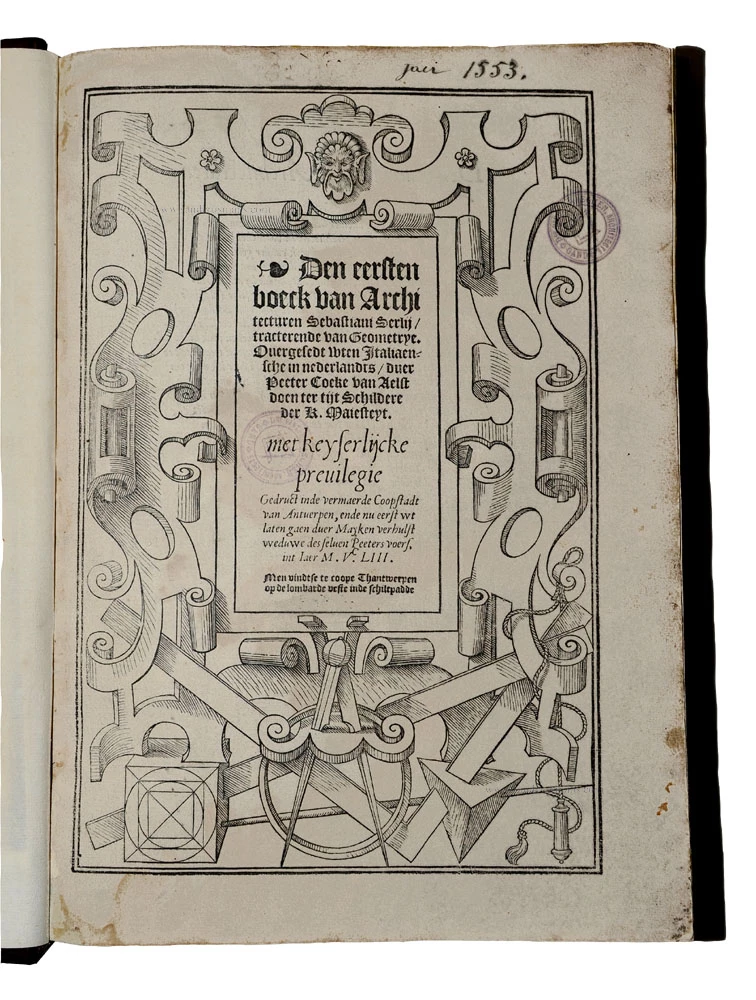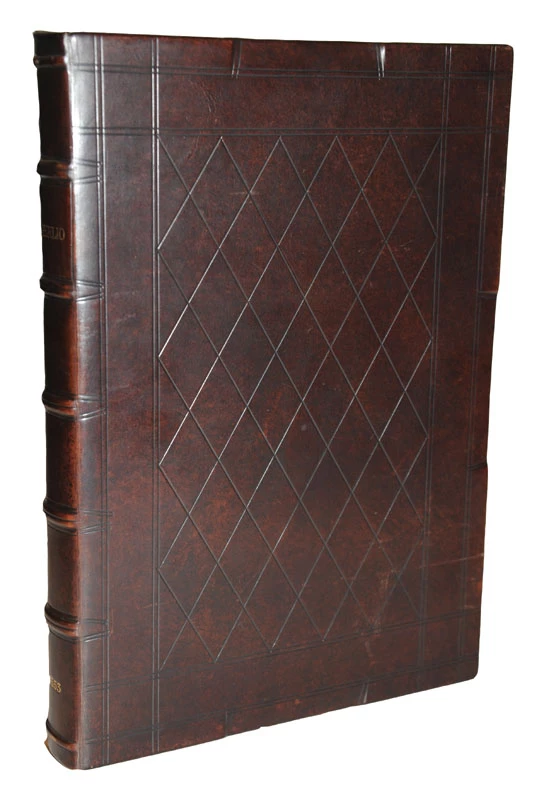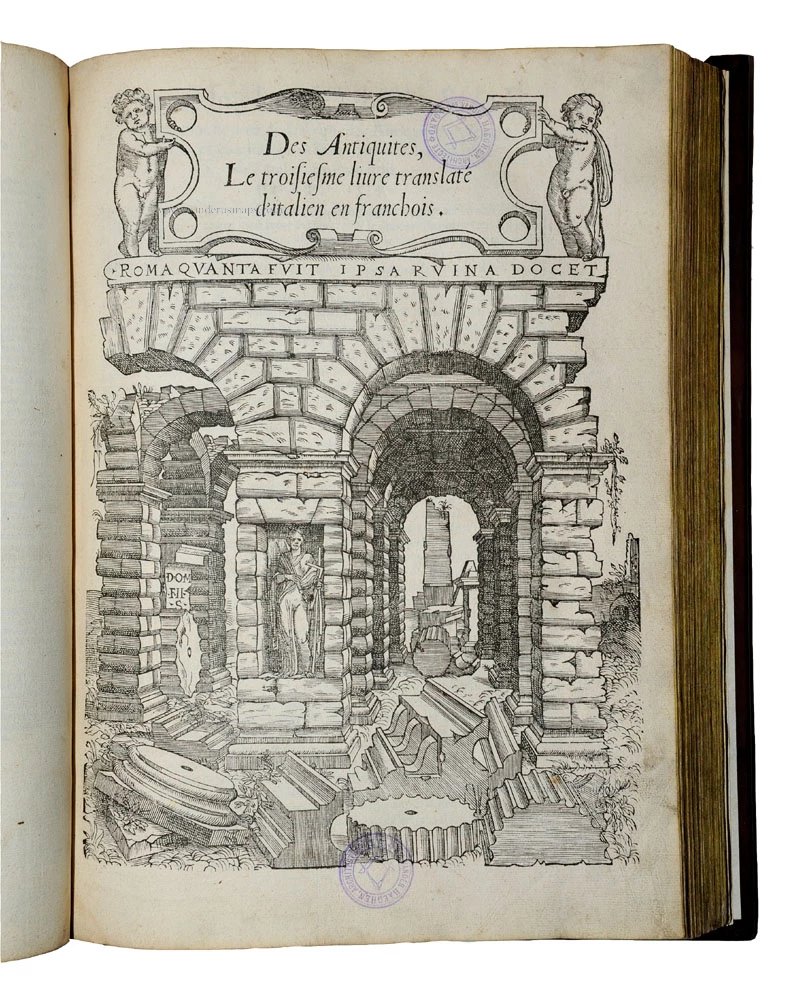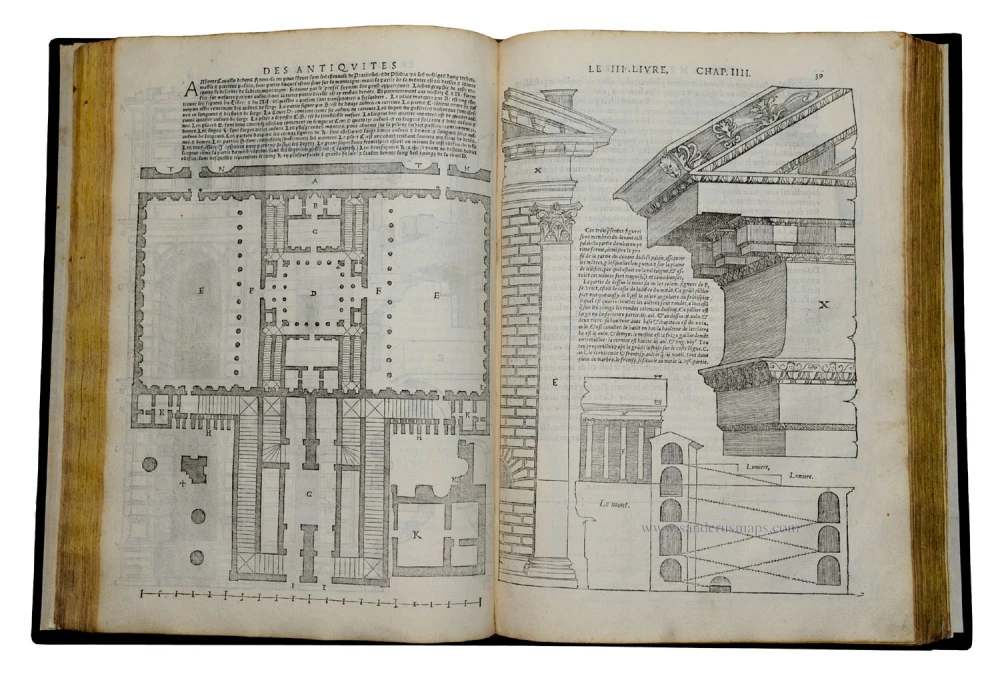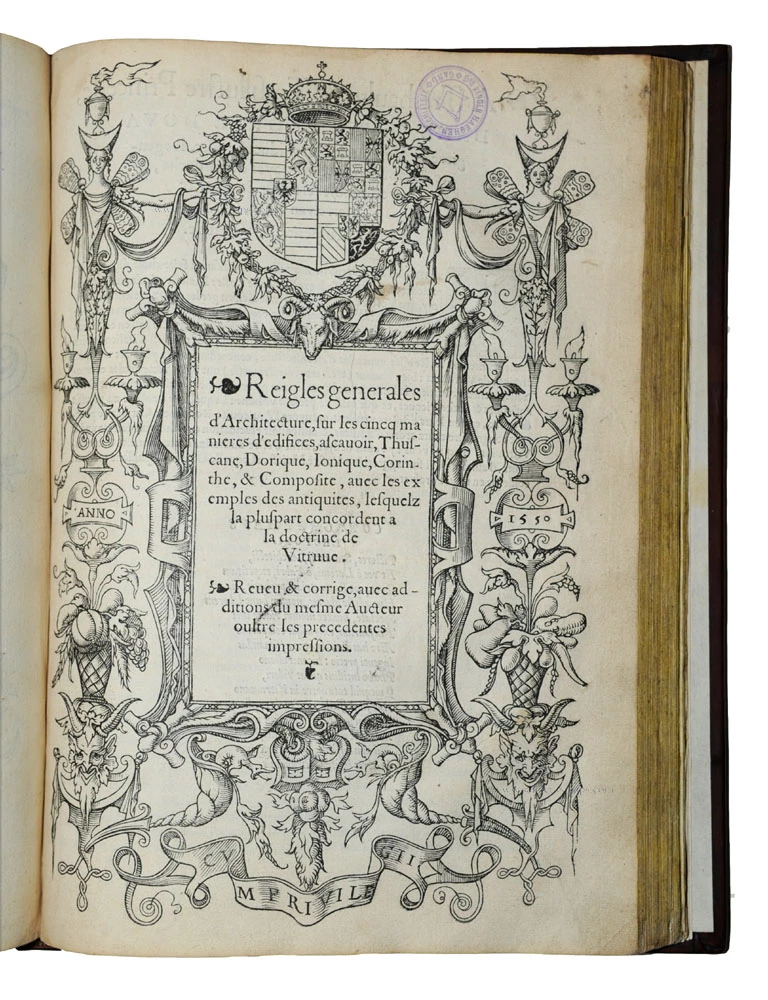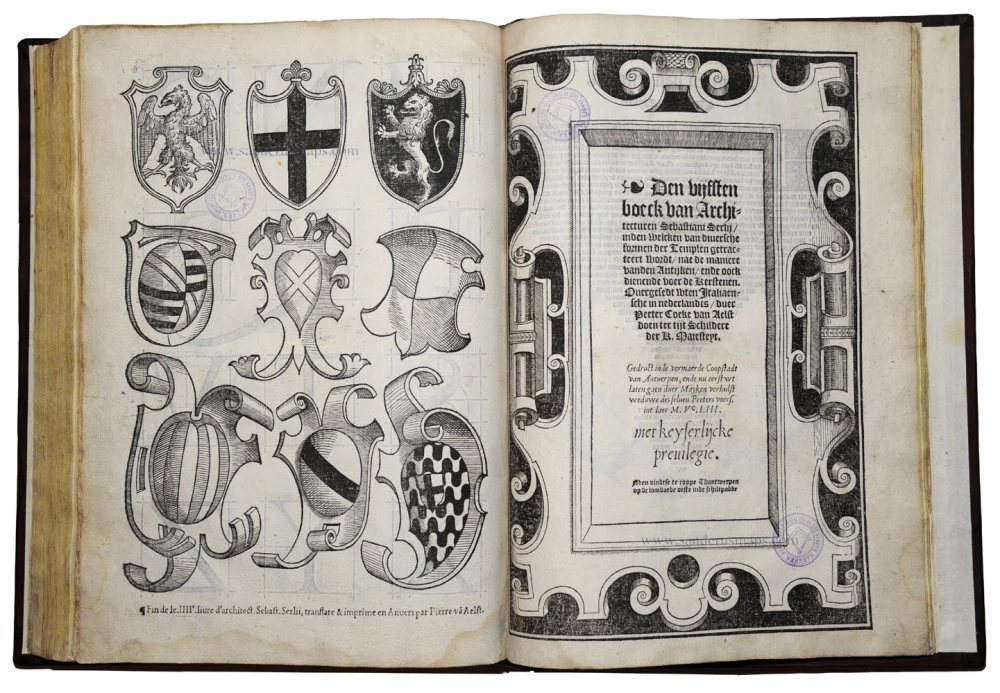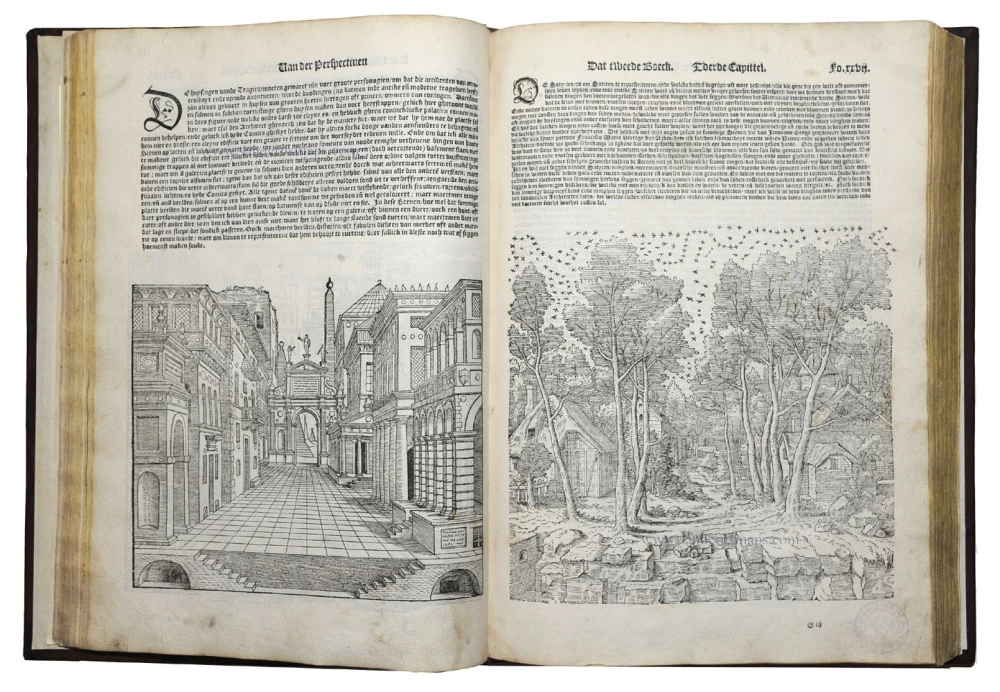Architecture, by Sebastiano Serlio. 1550-1553. 1662
Den eersten -[tweeden] boeck van Architecturen Sebastiani Serlii, tracterende van Geometrye. Ouergesedt wten Italiaenische in nederlandts, duer Peeter Cocke van Aelst ...
Item Number: 13719 Authenticity Guarantee
Category: Books > Miscellany
Fowler, 305, 310, 318, 323; Ornamentstichsammlung Berlin, 2569, 2562
Book I - II: 42p including title page and illustrations. The first Flemish edition of Serlio's Book I - II. The woodcuts of this edition, many in reverse, were copied from the undated Venice edition, and were in turn used in the Amsterdam 1606, Basel 1608, and London 1611 editions. Both titles are within a woodcut strap-work border, the first copied in reverse by Pieter Coecke van Aelst from the original French plate, with a lion's head in place of the salamander.
Book III: 73 + 3p including title page and illustrations. First edition in French, printed at Antwerp. The title page and illustrations were copied from those of the Venice 1540 edition.
Book IV: 71 + 1p, including title page and woodcut illustrations. Third edition in French. The title-page border and woodcut are from the same plates as the German and French editions of 1542 and 1545. The verso of leaf 72 contains the shields not included in the earlier editions by Pieter Coecke van Aelst.
Book V: 16p including title page and illustrations. First edition of the Flemish translation. Title within strap-work border, copied from the 1547 French edition.
Provenance: F. Vander Haeghen, bibliographer of Ghent, his stamps in the book.
This compilation has an identical composition as the one described by Fowler.

